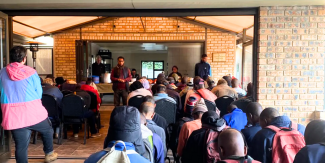November 20, 2025 ~ Amy Heckman, with contributions from Rev. Janae Meyer
The longest interstate highway in the United States is Interstate 90. The highway runs from Seattle to Boston and neatly divides the state of New York. In the middle of that state’s span, just off interchange 34, sits the village of Canastota, NY, which has a population of 4,556.
From its early days, Canastota’s position on the Erie Canal drew traders, businesses, and families, fueling steady growth for decades until thousands called it home. Today, Canastota remains a small, tight-knit town, even though the farming and industry that supported the area’s early growth no longer undergird the economy. Nearly 50 percent of students in local schools live come from families with economic need. When Canastota was inundated with severe floodwaters in the summer of 2025, the impact was—and still is—felt most sharply among those who already make do with less.
In the early hours of June 22, a violent storm swept through Canastota and its surrounding communities, leaving many residents unprepared. Tornadoes touched down nearby, causing fatalities. Trees brought down power lines. Heavy rain filled streets and flowed into basements, destroying belongings and damaging homes. For those living on streets that took the brunt of the flash floods, the devastation was unimaginable.
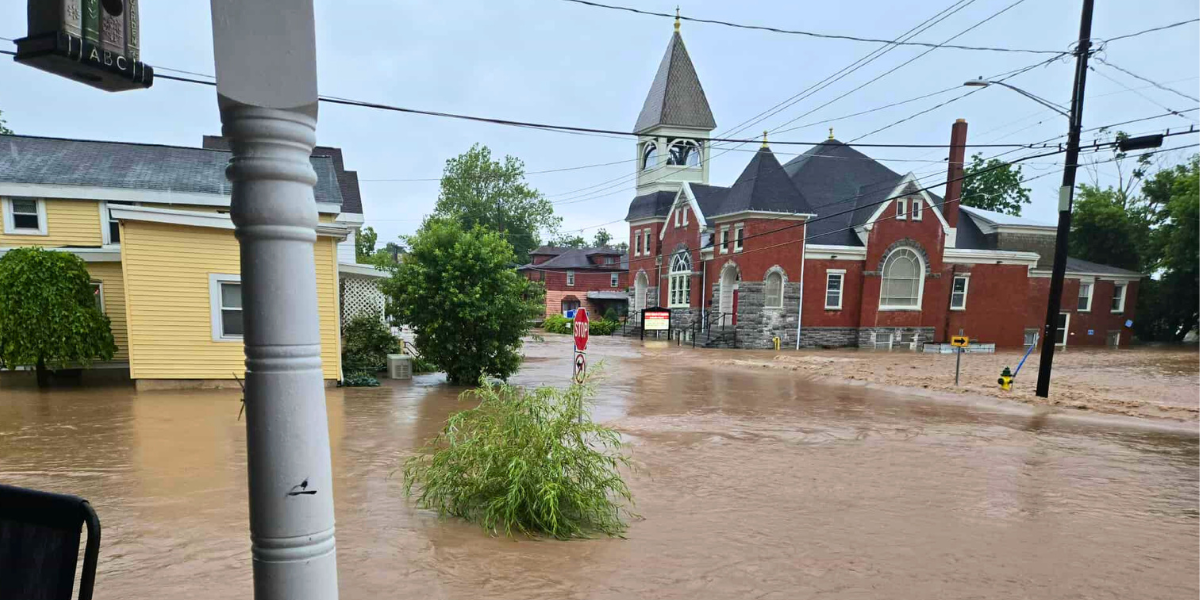
“A local meteorologist described the storm as a worst-case scenario,” shared Janae Meyer, lead pastor of Discovery Church of the Nazarene in Canastota. “There were downed trees and widespread flooding. It was Sunday morning, and roads were closed in all directions. Those that could make it gathered at the church to pray. We didn’t know how to respond, but we prayed to be God’s hands and feet in our community.”
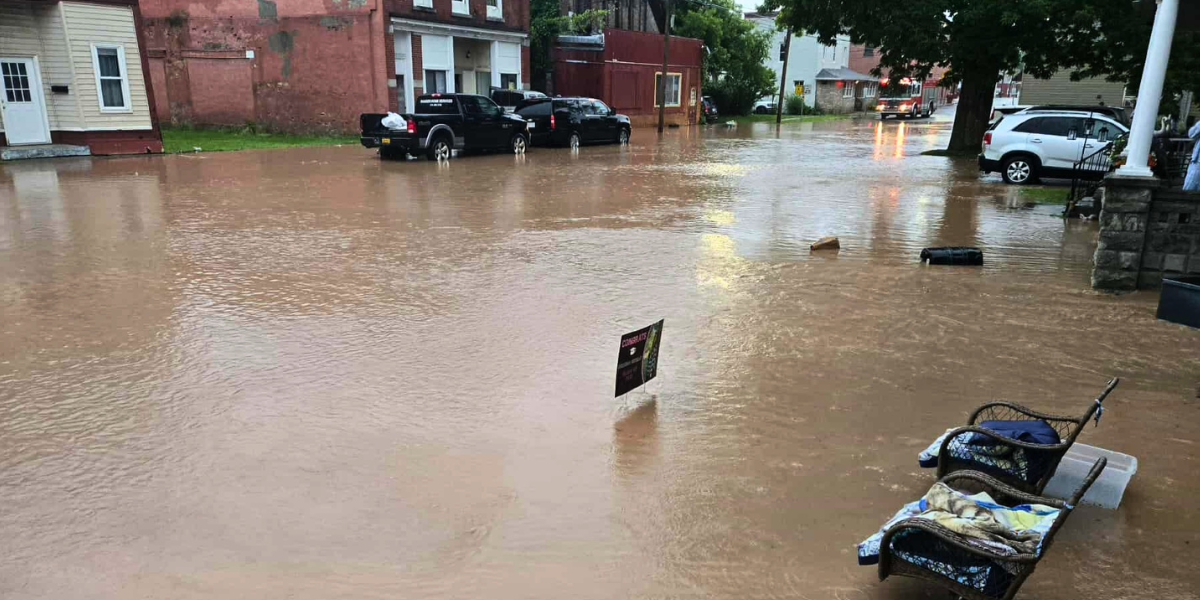
The days following the storm were particularly trying, as record-breaking temperatures and the lack of electricity compounded the suffering of village residents. The local soup kitchen was destroyed, closing one avenue of support. Pastor Meyer and her family spent time walking the streets most impacted by the floods, handing out Crisis Care Kits, water, and sack lunches. They found story after story of loss and crisis. Many people they encountered lived with financial struggles and were uninsured or underinsured, limiting the help they could expect.
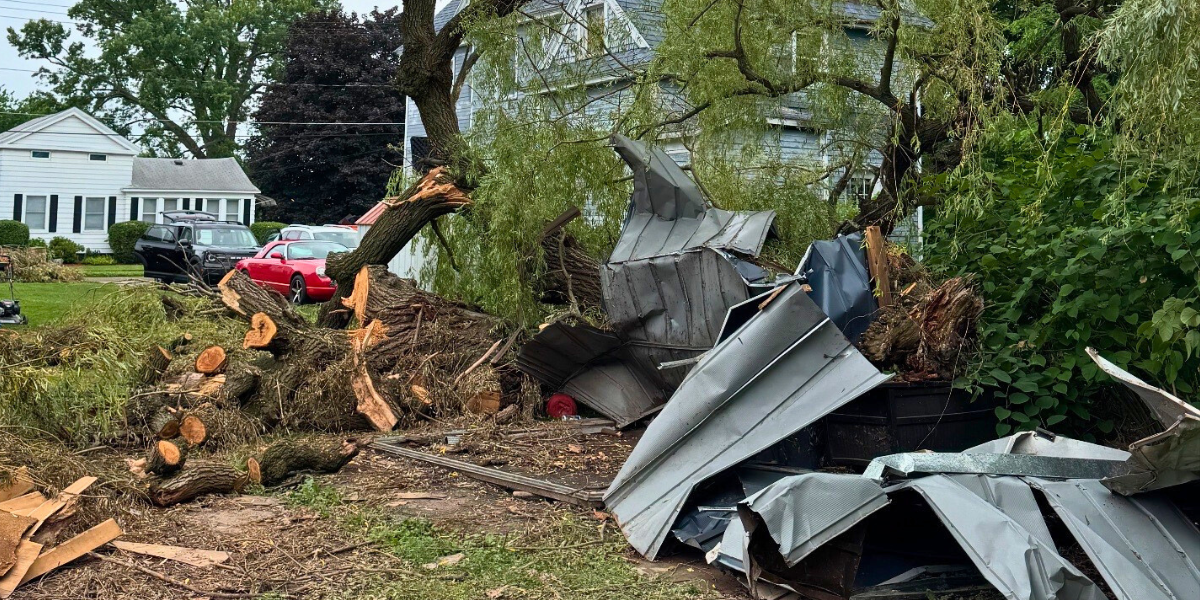
“Although there were big disaster relief organizations present and available, there were still so many unmet needs,” said Pastor Meyer. “Basements were flooded. Washers, dryers, water heaters, and furnaces ruined. People told us they felt overlooked and forgotten.”
Supported by donations and a grant from Nazarene Compassionate Ministries, Discovery’s congregation got to work. They were able to replace food for 25 families, provide five new water heaters, help clean up the local soup kitchen, and assist with debris removal for seven families. They provided emergency housing and hosted eight community meals, serving more than 375 plates of food.

Pastor Meyer has no doubt that God’s grace was present and at work in their neighborhood long before they established relationships of support in the aftermath of the storm.
“We walked the streets without an agenda or strings attached to the aid we were offering, and we saw God’s prevenient grace at work,” she shared.
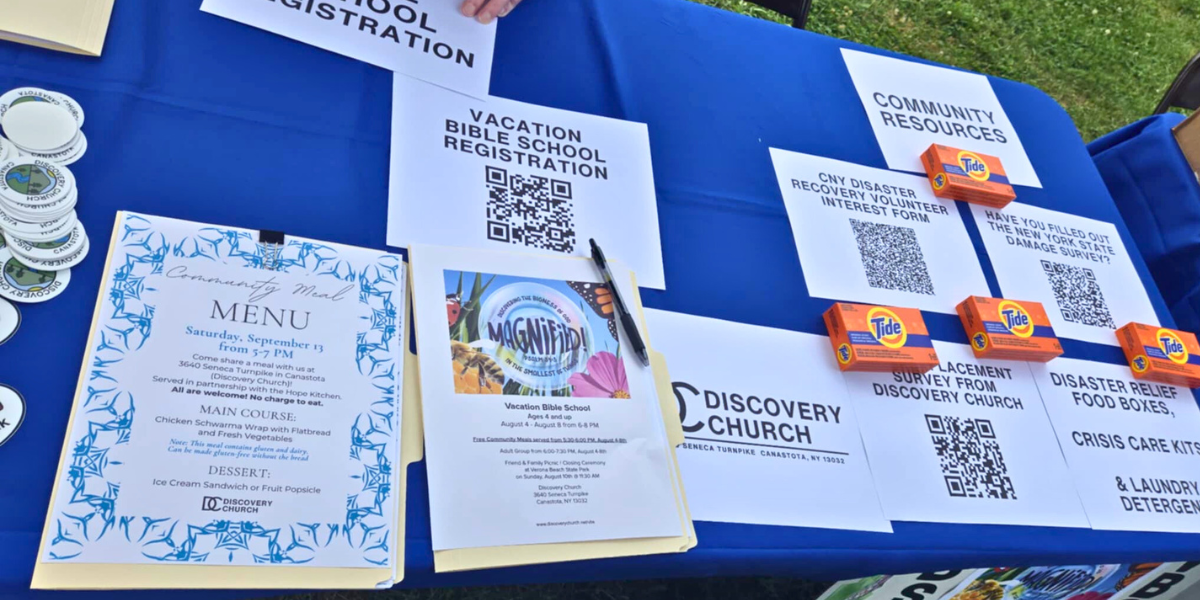
Through their home-by-home canvassing and in each conversation, connections were made. Some families had been looking for a church home, and four new families began attending services. One neighbor they assisted told a story of being nervous to attend a church in person for the first time. He had been watching out-of-state churches online for about a year until the flood led him to meet Pastor Meyer and volunteers from Discovery Church. The friendship and support they extended gave him and his wife the courage to begin attending in person.
Later in the summer, four individuals who encountered the church’s relief ministry were baptized by Pastor Meyer.
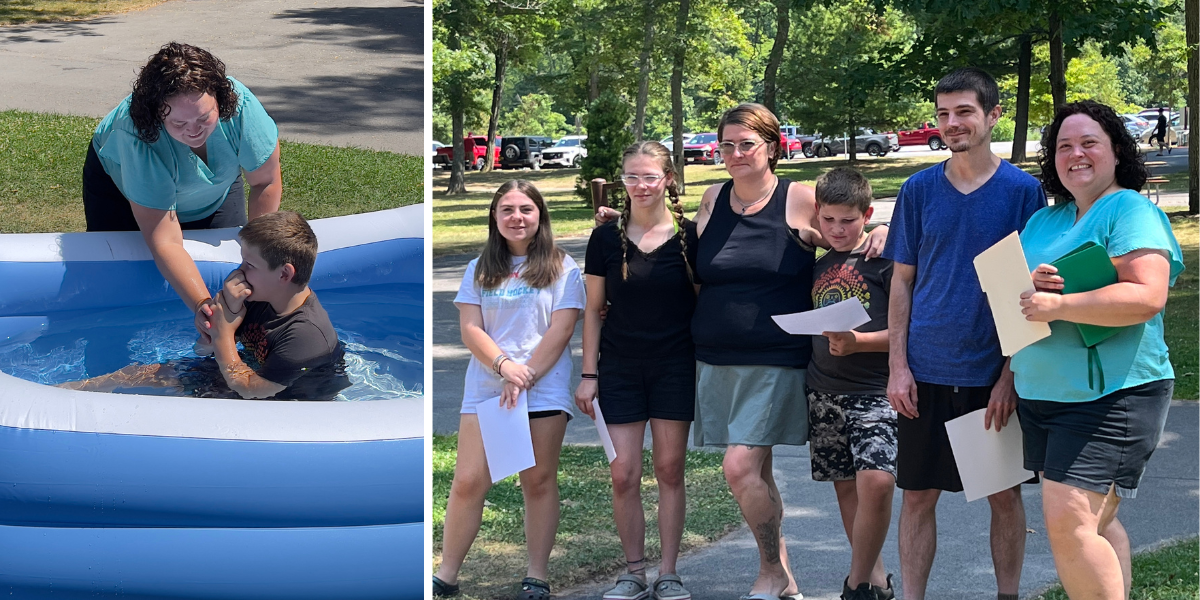
The need—and the work of providing a helping hand—continues in Canastota. There are still homes without hot water, food insecurity persists, and the threat of winter’s coming bitter temperatures looms. This fall, the church is helping two families source new furnaces for their homes, and they are continuing to address food insecurity through shared meals and grocery assistance. When a need is too great, Pastor Meyer works to connect that person to local or national agencies that can help. She is certain that these gestures of solidarity and meeting urgent needs are holy work—a linking with the Spirit to point hearts to a compassionate, loving God.
“God is at work in our world, even without our participation,” she explains. “We have been given the gift of being allowed to partner with God in bringing God’s kingdom come on earth as it is in heaven.”





